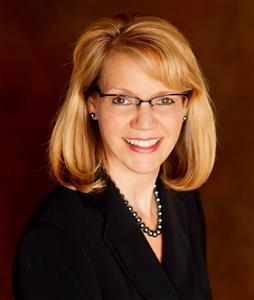Technology is creating new areas of risk for businesses, requiring a collaborative mindset and strong relationships to manage risk effectively. At the same time, technology is creating new opportunities to improve how internal auditors manage risk – opportunities that come with the same requirements of collaboration and relationship-building. These changes to the internal audit landscape are becoming evident at a time when more women than ever before have risen to positions of senior leadership.
In our twelfth annual edition of Internal Auditing Around the World, we explore the accelerating change wrought by technology as a source of opportunity and as a source of risk. We also decided to focus this year’s edition solely on the viewpoints of women leaders in internal audit. This combination of themes yields a fresh perspective on the growing drive to collaborate – with IT, business units, senior management and external partners – to leverage specialist knowledge, harness emerging technologies and build influential relationships as trusted advisers to the enterprise.
“Technology is going to completely change the way we audit,” says Kathy Swain, Vice President of Internal Audit at Horizon Blue Cross Blue Shield of New Jersey. “As more businesses are built entirely on technology, internal audit will need to follow suit.”
In no area is this more true than in data analytics, a technological innovation embraced by many of this year’s internal audit leaders as a way to continuously monitor for emerging risks and potential optimizations. At Nordstrom, business intelligence serves not only to support the internal audit function, but also to share insights relevant to business decision-makers.
“These insights will allow our team to become even better at what we’re already good at – risks and controls,” says Dominique Vincenti, Nordstrom’s Vice President of Internal Audit and Financial Controls. “They will also help us to underscore the direct value that the function is providing to Nordstrom in many other ways.”
Some internal audit groups take a different approach – they collaborate with external partners not only to gain access to specialized expertise, but also to leverage technologies not available in-house. “We’re not necessarily making huge technology investments,” says Julie Eason, CNL Financial Group’s Internal Audit Director. “When I don’t have the tech internally, I rely on my co-sourced partners.”
Last but not least, cybersecurity is a growing area of risk that has led internal audit functions to partner closely with IT. Monica Frazer, Vice President of Internal Audit for Baylor Scott & White Health, holds meetings with the chief information security officer at least once a month, and has new hires undergo extensive training in relationship-building skills. This emphasis on collaboration pays off, according to the surveys Frazer’s department holds after every audit. “We’re really viewed as a trusted business adviser,” says Frazer.
Mari Yonezawa, Chief Audit Executive at Obara Group, sums up this year’s theme well: “If auditors have strong communication skills, they can build good relationships, and the audits will go more smoothly.” Then she adds, “I think this is why women make good auditors. We tend to be effective communicators.”
The full volume of our 12th edition of Internal Audit Around the World is available here – peruse at your leisure and let us know your thoughts.





